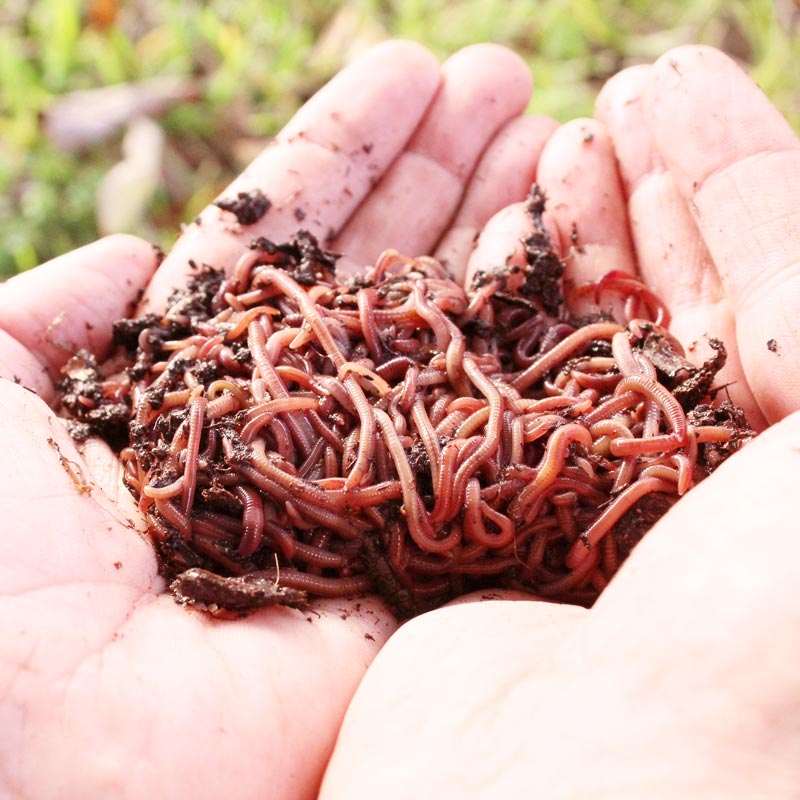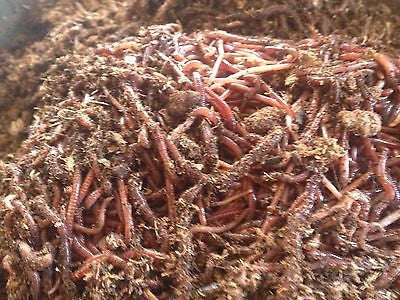Red Wiggler Worms Demystified: Unlocking the Tricks of Vermiculture for Greener Living and Nutrient-Rich Soil
In the realm of sustainable methods for improving soil top quality and promoting eco-conscious living, red wiggler worms play a pivotal yet frequently forgotten role. Red Wiggler Worms. Comprehending the intricacies of caring for these worms, enhancing their setting, and utilizing their castings can lead to a greener way of life and much healthier soil for plants to flourish.
The Duty of Red Wiggler Worms
Red Wiggler worms play a vital role in composting systems by efficiently damaging down natural matter into nutrient-rich spreadings. These starved eaters eat a variety of natural products, such as kitchen scraps, yard waste, and paper items. As they feed, the worms' digestive system processes damage down the natural matter into a fine, dark, and nutrient-dense product referred to as worm spreadings or vermicompost.
The spreadings produced by Red Wiggler worms are highly valuable for dirt health and plant growth. They are rich in essential nutrients like potassium, phosphorus, and nitrogen, which are important for supporting healthy plant advancement. In addition, worm spreadings have beneficial microbes and enzymes that assist improve dirt framework, boost water retention, and improve nutrient uptake by plants.
Advantages of Vermicomposting

Furthermore, vermicompost, the nutrient-rich output of vermicomposting, serves as a superb natural plant food and dirt conditioner. It boosts soil framework, enhances dirt aeration, and boosts soil dampness retention. These buildings add to much healthier plants with stronger root systems and better resistance to bugs and conditions. Vermicompost additionally enhances the dirt with important nutrients like nitrogen, potassium, and phosphorus, advertising plant development and total soil fertility.
Furthermore, vermicomposting supports sustainable horticulture techniques by supplying a natural and chemical-free option to artificial plant foods. Red Wiggler Worms. This eco-friendly method not only enhances the dirt yet additionally helps in reducing reliance on unsafe chemicals, advertising a greener and extra lasting means of gardening
Establishing a Worm Container
When developing a worm container for vermicomposting, correct arrangement is crucial to make certain the success of the composting process. The initial step in setting up a worm bin is selecting a suitable container. This can be a plastic bin or wood box that provides enough space for the worms to walk around and has appropriate drain openings to stop waterlogging. Next off, a bed linens product such as shredded newspaper, cardboard, or coconut coir ought to be included in the container. This bed linen offers a comfortable environment for the worms anchor and aids keep wetness degrees.
After including the bed linen, present the red wiggler worms to the bin. The worms need to then be provided with food scraps such as fruit and veggie peels, coffee grounds, and eggshells.
On a regular basis keep track of the dampness levels and temperature level in the worm bin to make certain ideal conditions for the worms. With correct setup and upkeep, the worm container will successfully transform organic waste right into nutrient-rich compost for your plants and yard.
Harvesting Worm Spreadings
To efficiently accumulate nutrient-rich worm castings from your vermicomposting system, a systematic harvesting approach is important. There are a couple of vital steps to follow to make sure a successful process when it comes time to gather the worm spreadings. Firstly, stop adding fresh food scraps away of the worm bin for a number of weeks before collecting. This encourages the worms to migrate sideways with fresh bed linens and food, making it easier to scoop out the castings from the opposite.

Troubleshooting Common Issues
Determining and attending to typical challenges that may arise during the vermicomposting procedure is crucial for keeping a healthy and balanced and efficient worm container. One typical issue that vermicomposters encounter is overfeeding. Including excess food scraps can cause an accumulation of moisture and level of acidity in the worm container, potentially harming the worms. To stop this, feed the worms in small amounts, guaranteeing that the food scraps are adequately damaged down prior to adding more. An additional problem is unpleasant smells emanating from the worm bin. Foul scents indicate anaerobic problems, commonly triggered by overwatering or inadequate air flow. To correct this, change the moisture degrees by adding completely dry bed linen materials like shredded paper or cardboard and rise oygenation by turning the bed linen consistently.
Additionally, if the worm population is decreasing or the worms show up undesirable, maybe due to ecological stress factors such as extreme temperature levels or pH degrees. Monitoring these variables and making required changes is important for the health of the worms. By troubleshooting these typical concerns immediately, vermicomposters can ensure a effective and smooth vermicomposting process while preserving a prospering worm populace.

Final Thought
In conclusion, red wiggler worms play a crucial duty in vermiculture by damaging down organic issue right into nutrient-rich dirt. Setting up a worm bin is important for effective vermiculture, and gathering worm castings gives beneficial compost for horticulture.
As they feed, the worms' digestion processes damage down the organic issue right into a fine, dark, and nutrient-dense product known as worm spreadings or vermicompost.
The spreadings created by Red Wiggler worms are very valuable for dirt health and plant development. Adding excess food scraps can lead to a build-up of wetness and acidity in the worm container, potentially damaging the worms.Additionally, if the worm populace is declining or the worms show up harmful, it might be due to environmental stress factors such as extreme temperature levels or pH levels. Establishing up a worm bin is important for effective vermiculture, and gathering worm spreadings offers beneficial compost for horticulture.